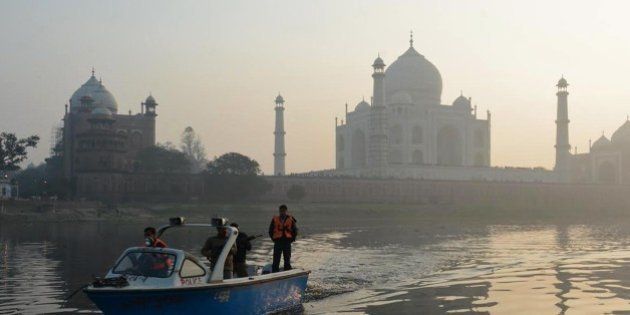
People in Agra would not be able to use their mobile phones for three hours Tuesday when US President Barack Obama comes calling.
The Uttar Pradesh government has worked out a security plan for the visit and sent its top officials to the city to work along with US security officials to oversee arrangements and plug gaps, if any.
The entire stretch from Delhi to Agra would remain under high alert Jan 27 and for three hours people would not be able to use their mobile phones in the vicinity of the Taj Ganj area, the Mall road and the Fatehabad road as electronic jammers would be in operation, officials said.
Late Thursday, Director General (Security) Gopal Gupta, who is the nodal officer for the visit, held detailed discussions with US security officials. Additional Director General Mukul Goyal also conducted prolonged discussions with local police officials to draw up the road map for posting police teams along the National Highway 2 and the Yamuna Expressway.
The two roads are already under intensive patrolling by the Provincial Armed Constabulary and the Rapid Action Force. The US security agencies are not willing to take any chances, sources said. The entire route from the Kheria airport to the eastern gate of the Taj Mahal, and inside the complex, would be under the direct supervision of the US commandos.
They would also be keeping an eye from the rooftops of hotels and houses in the Taj Ganj area.
The chief minister's programme is yet to be finalised but Governor Ram Naik would be in Agra early Jan 27. Principal Secretary (Home) Devashish Panda and half a dozen other senior officials of the state government are arriving in Agra Saturday to take command of the situation.
Officials said schools in the area could be closed Jan 27. The airport to the Taj stretch of road, roughly 12 km, would remain out of bounds for the locals two hours before and after the visit, traffic police said.
The US team has identified eight escape routes through satellite imagery, in case of emergency. All buildings along these routes have been identified and listed. The commandos posted there would ensure that the people are not permitted even to open their windows.
A senior police official told IANS that there would be close to four dozen vehicles in the US president's convoy. Obama would be travelling in his bullet and mine-proof limousine - the Beast.
The sources said the third advance party of the US security team would Friday arrive for another rehearsal from the Kheria airport gate to the Taj Mahal.
Special permission is being sought to allow the vehicles to enter the Taj Mahal's eastern gate. A Supreme Court order had directed people to get down at the Shilpgram complex, 500 metres away, and board an electric vehicle to the entry gate.
American doctors would Friday visit the local Sarojini Naidu Medical College to have a look at the trauma centre and other facilities. Chief medical officer H.S. Danu said all arrangements, including the critical care ambulance, were in place.
The Archaeological Survey of India Friday began cleaning the gardens and the entire complex. The ramp will be given a fresh coat of paint.